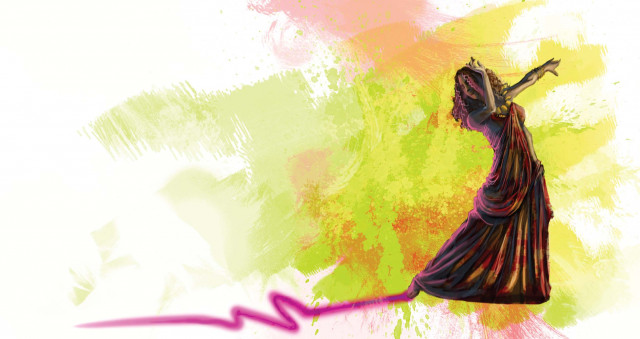Umrao Jan to Gohar Jan: Women who ‘ruled’ India
The session The Courtesan in Literature: Umrao Jan to Gohar Jan focused on South Asia’s romance with courtesans.

From Umrao Jan to Gohar Jan, South Asia’s romance with courtesans. DESIGN: S. JAMAL
“Courtesans were the only women who were available to interact with men in public until the 19th century. And these were powerful, intelligent women,” said poet and translator Afzaal Ahmed Syed. He was speaking at a session The Courtesan in Literature: Umrao Jan to Gohar Jan. Mira Hashmi, the moderator, opened the discussion by mentioning that courtesans had long been romanticised in South Asia.
In reply, Naveed Shahzad said there was need to understand the role and stature of concubine in the pre-independence era.
“These (courtesans) women enjoyed great wealth and immense power,” she said. “A little whisper could get one appointed a governor.
That is how powerful they were,” she said. What understanding we have now of these women, she said, relied mostly on the portrayal of these women in our cinema.
Listing films like Pakeeza, Umrao Jan and Bazaar, Shahzad constructed a narrative on how the cinema brought about the concept of a poor, down-trodden concubine.
“This is not how it was then”, she said. Shedding light on the subject, Nigah said these women were exposed to the arts and literature. She said during wars, women and girls suffered the most as many were killed by their families after they had been humiliated by their enemies.
“The only option left was either to become a baandi of a nawab or go to the chowk,” Nigah said. “In exercising the choice they became rulers of those who ruled India”, she added.
Receiving education and training in the arts and culture, Nigah said these women became highly cultured. “Men could interact with the courtesans in public space without a blemish owing to a degree of cultural acceptance”, said Farooqi. Literature and music being the two most popular art forms, Farooqi said, they started being practiced at the kothas.
“Through this came about what mainly constituted a vibrant culture of arts and literature,” he said.
The panellists also discussed Farooqi’s recent novel Between Clay and Dust which revolves around a pehalwaan and a courtesan.
Published in The Express Tribune, February 24th, 2013.



















COMMENTS
Comments are moderated and generally will be posted if they are on-topic and not abusive.
For more information, please see our Comments FAQ